Tuesday 30th June 2015Van Gogh and Art Preservation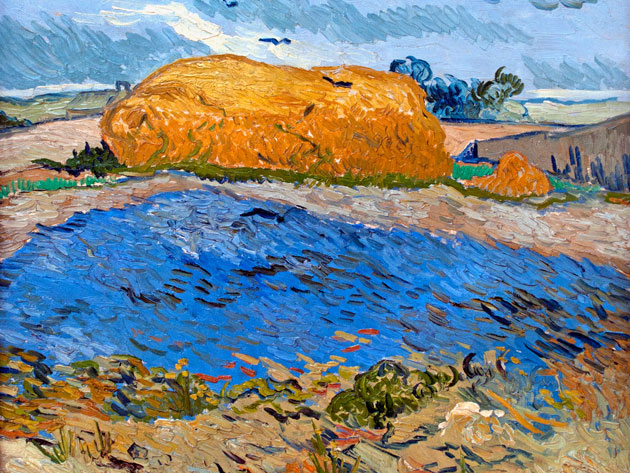
It seems strange to say, but we almost take it for granted that the artworks of the ancient masters are immutable. Certainly, they are subject to the rigours and stresses of time, but usually this presents itself of the form of craquelure (the name given to the intricate network of cracks and splits that occur in oil paintings, most commonly visible in works of the European old masters), slight fading, or something similar that tends to reinforce the sense of gravity and aura that surround the actual paintings themselves. What we don't expect is for the actual pigments themselves to change, beyond natural aging.
This turns out to be exactly what's happening to one of Vincent Van Gogh's masterpieces, entitled 'Wheat Stack Under A Cloudy Sky'. The red pigments Van Gogh used extensively in his work, known as 'red lead' or 'r minium', have been slowly fading away to white, rather than simply losing their lustre and vibrancy as might be expected in the normal aging of paint. Thanks to some new investigative work by researchers at the University of Antwerp using a new X-ray powder diffraction mapping and tomography techniques, they were able to dig down into the cause of the pigmentation shift.
In Chemistry World, Matthew Gunther said "Researchers think that when red lead is exposed to light it is converted into plumbonacrite, which reacts with carbon dioxide to form hydrocerussite and cerussite." For those of us who don't have an advanced chemistry degree (probably most of us ;-) ) that the chemicals used in the pigment are interacting with the carbon dioxide in the air and changing their chemical properties, which in turn changes the pigment towards white.
Alison Meier, an art writer and theorist, speaking about the importance of this finding, said that "continued research on the chemistry of van Gogh's pigments could have a wider influence on art conservation. And importantly, it could influence the way his paintings are displayed in light, knowing that the rare mineral in the red may fade from the colors the artist originally envisioned."
It really starts to raise questions about how long these original masterpieces can be expected to stay true to the original vision of the artist, and how best to preserve them for future generations. While it's a beautiful image to see in a digital reproduction, it's still not quite the same as seeing the original work in all its glory. Hopefully, these discoveries will also shed some light on possible practices for art conservation and preservation, as science and technology advance into uncharted territory.
Posted on June 30th 2015 on 04:03pm
0 Comments
Friday 26th June 2015Artist Spotlight: Google Deep Dream
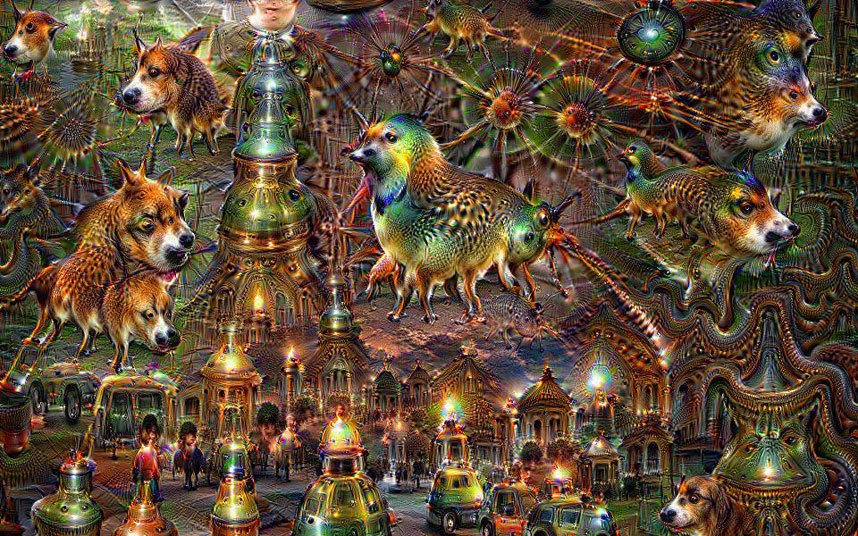
This week's Artist Spotlight is going to take things in a different direction than usual, as we're not technically going to be looking at the work of a human artist. If you've spent any time at all on Facebook, Instagram, or any other social network in the last few days, you'll have noticed a proliferation of fantastical and bizarre psychedelic images, often tagged with the hashtag #deepdream or something similar. For those of you who haven't seen, check out the example attached to this post to get a sense of the kind of image we're talking about.
Rather than simply being the acid dreams of artists looking to reconnect with the 1960's hippie vibe, these pictures are actually the result of a feedback loop created using Google's image recognition algorithms. Part of a larger ongoing project at Google to develop image recognition technology by identifying various objects within photographs, interesting results begin to occur, as the software often believes it has found patterns where none exist - arguably, an intrinsic element to many of the world's artistic movements.
"The techniques presented here help us understand and visualize how neural networks are able to carry out difficult classification tasks, improve network architecture, and check what the network has learned during training."
"It also makes us wonder whether neural networks could become a tool for artists—a new way to remix visual concepts—or perhaps even shed a little light on the roots of the creative process in general."
We're not going to argue about whether or not an artificial intelligence (some would say it's just an algorithm, but it's hard to nail down exactly what the difference is between the two) can really be an artist, but like all good artists, the 'whatever you choose to call it' presents the world with difficult questions. Regardless of whether you appreciate or enjoy the images that are produced, it's a remarkable exploration of interpretation and subtlety, and for those of you who may have explored dreams in your artwork, surprisingly resonant.
If you're interested in exploring the Deep Dream interface, a number of websites have sprung up that offer you the ability to upload your own images to have them processed by the feedback loop. For those who are more technically savvy (and perhaps less comfortable with uploading their images to random websites on the internet, which is probably a smart decision), it's possible to download and compile the code yourself, which is an odyssey in and of itself.
Posted on June 26th 2015 on 03:48pm
0 Comments
Wednesday 24th June 2015Do Auction Prices Really Matter?
One of the staples of art news in the wider media world is record breaking auction prices. It seems nearly impossible to go a week without seeing another news story about a new auction record for a painting, or a work by a living artist, or for a 3 day blockbuster sale where billions of dollars change hands across a few separate auction lots. We've been a bit guilty of this as well, as the numbers truly are staggering, but it has eventually led us to wonder: what does this really have to do with art? It's occasionally interesting, but when new records seem to be cropping up monthly, if not weekly, it's difficult to get as excited about it as before this trend kicked off.
So what does it really have to do with art? In the day-to-day practical life of most artists, it has little to nothing to do with art. The pieces that are being exchanged are often beautiful, and often historic, but to the collectors who pay these incredible sums for the pieces, does the history or beauty really matter? Or is it simply a tax-write off, a way to shelter some income, or an investment that will appreciate in value, no different than buying stock in a new company?
The only possible exceptions might be the works by still-living artists, as those are only recently commanding the staggering prices that classic works by European masters and their lot have always received. They're changing hands less and less frequently nowadays, so perhaps that is a part of what is driving up auction prices around the globe. The artist still doesn't see a single cent of any auction price, regardless of whether they're still living or not, of course, so perhaps that still doesn't matter.
Perhaps the biggest concern is that these truly incredible valuations for pieces are causing cash-strapped museums from around the world to consider breaking up their collections in order to create new endowments to keep their doors open - or in some cases, to expand their collections. All this really does, though, is remove a piece of incredible cultural history from public access, so that a wealthy speculator can preserve it in a warehouse somewhere in the hopes that it will appreciate value. Isn't art supposed to be for the world at large?
Posted on June 24th 2015 on 07:25pm
0 Comments
Friday 19th June 2015Reconstructing Lost Artworks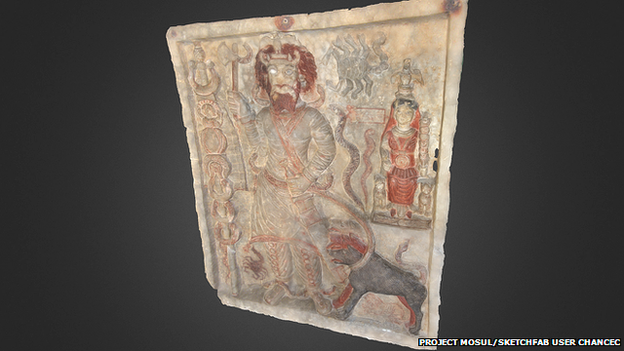
War is a terrible and seeming inescapable part of the world, and we pay uncountable prices for it, both literally and figuratively - but one of the tragically often-ignored prices is in the cultural treasures that are lost along the way. Most notable recently during the invasion of Iraq in 2003 when numerous museums and galleries were looted, and unfortunately still occurring today thanks to the constant fighting in many areas of Iraq and neighbouring countries due to the rise of the Islamic State, some treasures are being stolen and sold on the black market, while some are simply being destroyed. Fortunately for the cultural history of the world, some of these priceless artifacts are being reconstructed using an advanced technology known as photogrammetry.
Photogrammetry is a process that takes multiple photos of a different angles of an object and recreates them as a digital 3D file, one that could then be either rendered and viewed on the computer screen, or even put through a 3D printer to create a replica of the original piece. Naturally, these can never replace the value of the lost works, but since most will never see the light of day again, it's the best chance we're likely to have.
One of the most interesting projects to come along that uses these techniques is named Project Mosul, after the now-destroyed Mosul Museum. It's based around a crowdsourcing effort, so that anyone who visited the museum and snapped pictures of the pieces on display can submit their photographs to the project to help refine the 3D models of destroyed artworks. The more source photographs there are, the more detailed the reconstruction can be, as each photograph is typically taken from a slightly different angle, which gives a slightly different description of the 3D surfaces of the object in question.
The founders of Project Mosul, who are entirely volunteer staff, hope to expand the project to cover other destroyed sites around the world, and open up new possibilities for experiencing cultural treasures that have been destroyed. Would that it weren't necessary, but war sadly seems to be one of the most constant phenomenons throughout history - perhaps one day, we'll be able to overcome even that legacy.
Speaking to the BBC, Project Mosul co-founder Matthew Vincent said, "3D printing is really proving to be one of the most valuable assets for heritage that we have today. It's a way to bring them back to life and have a tactile experience with them, even if we can't guarantee that they're exactly as the original would have been.
"Whether it is because of conflict or natural disaster, our heritage is such a delicate and valuable resource, the only way that we can really preserve it is to take the steps to make those digital surrogates, so that we can protect the physical reality of that heritage as well."
Posted on June 19th 2015 on 09:15pm
0 Comments
Wednesday 17th June 2015Artist Spotlight: Richard Prince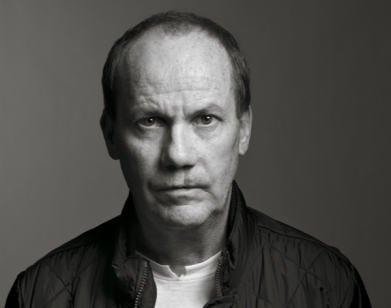
Richard Prince has been in the news a lot recently after something of an extended absence, and with good reason. As we discussed in a recent post, Prince's latest exhibit consisted of photographs taken directly from other people's Instagram account, enlarging the photos, printing them and then putting them up for sale for a rumoured $90,000 apiece. Naturally, the photographers whose images he used were less than impressed, and at least one has begun to explore the possibility of some kind of formal legal action. Prince is no stranger to this kind of appropriation, and in fact has decades of this kind of practice under his belt - as well as a few legal challenges.
Prince's career began in the mid-1970s, with an appropriation of a photograph used in a Marlboro cigarette billboard advertisement. Somewhat surprisingly, this photo recently sold at a Christie's auction for over $1 million USD, making it the first "rephotograph", as they are apparently known, to earn the honour. The addition of fame and wealth brings a curious question about ethics into his work, especially when "his" works command such incredible prices, of which the original creators never see a dime, naturally. It's one thing for a starving artist to challenge conceptions of ownership, but somehow seems to be an entirely different matter when the artist in question happens to be worth millions of dollars.
Speaking on the subject of found photography, Prince said, "Oceans without surfers, cowboys without Marlboros…Even though I’m aware of the classicism of the images. I seem to go after images that I don’t quite believe. And, I try to re-present them even more unbelievably." As artistic statements go, it's perhaps not the most elegant, especially when viewed in the context of his Instagram exhibition, which is entitled New Portraits, all of which have sold.
Regardless of how you feel about Prince or his work, one of the most interesting things to happen from his work is the feedback loop he created by (possibly without awareness) took the images of other professional artists and models. The easiest way for them to fight back against this appropriation of their work is to turn the tables and reappropriate their own images of his images, although they seem to be lacking in the financial success area at the moment. Many legal challenges have been fought against Prince, but so far, he has somehow managed to win every single one. We'll keep a close eye on this ridiculous circus, and let you know how it develops!
Posted on June 17th 2015 on 07:57pm
0 Comments
Friday 12th June 2015The Hidden History of Art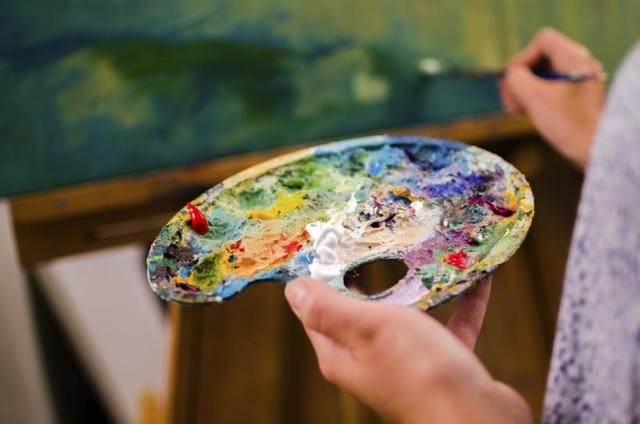
Art is often mysterious. Anyone who has been spellbound by portraits and still lifes from long ages past or gotten lost in the exploration of a mirror-world of meanings behind conceptual artwork will be familiar with this. The primary difference is that conceptual artwork tends to be the subject of lively modern debate, whereas works by artists long centuries dead are inherently more mysterious, as there are naturally none living today to who were alive at the same time as the artist. It thus falls to the art historian, anthropologists and other experts to make best guesses at the stories behind the development of some of the most famous works of art.
Recently these artistic excavators got a new tool in their arsenal, courtesy of a new advanced scanning technique being developed by a group called INSIDDE - "INtegration of technological Solutions for Imaging, Detection, and Digitisation of hidden Elements in artworks" - pretty long winded, but they're doing some great work. Typically, x-ray and infrared reflectography is used to peer inside paintings, but this is largely avoided unless absolutely necessary, as these techniques heat the materials of the painting, which can lead to cracking or other types of erosion, and in some cases seriously damaging the work.
Thanks to recent developments in terahertz scanning, this problem has been avoided. Terahertz scanning has been generally unreliable for extremely fine detail work, like that necessary in the art world, but new developments in material science has provided a way past these stumbling blocks. Incorporating the space-age nanomaterial graphene, the researchers were able to generate a terahertz scanner that overcame this problem and has allowed them to look at each and every single layer of material created by the artist, included individual layers of gesso.
The project is still in the prototyping phase, but promises to be an exciting new tool for art historians and researchers. Who knows what hidden details lurk beneath the surface of some of the greatest masterpieces in the world? Thanks to this revolutionary new method, we may soon be able to find out - let's just hope it doesn't turn into some real life Da Vinci Code. Although, on second thought, that might actually be even more incredibly amazing. Only time will tell for sure, but we can expect some interesting results in the next couple of years!
Posted on June 12th 2015 on 05:02pm
0 Comments
Wednesday 10th June 2015Summer Project Inspiration
The Spring rains are over, the flowers are blooming and the summer sun has finally come at last! Summer is one of the most beautiful times of the year and can be one of the most inspiring seasons of all (sorry, Southern Hemisphere! Check out our Winter project inspiration posts instead). After incubating ideas throughout the Winter and cultivating them during Spring, they can finally leap forth during Summer and truly come into their own.
Beyond the pure enjoyment that comes from being able to get outside and enjoy life, new experiences often stimulate new creative ideas, as many artists know. What might not be immediately apparent is that it's possible to use the seasons themselves as both project inspiration and integral parts of your projects themselves. Think about the characteristics of the season in the context of your chosen medium. If you typically paint watercolours, experiment with how the medium changes when painting in bright, direct sunlight - you may discover a new dry brush technique, or the fact that the paint dries faster may change the way you work. It might not be the best tactic for use when painting a still life, but if you're painting abstracts you may stumble onto something incredible.
If painting isn't your style, there are still plenty of ways to integrate Summer into your artistic practice. Summer is a boon for photographers of all types, but none more so than street photography, as the outside world suddenly seems alive with human activity. Even if you've never got into the style before, it's never too late to give it a shot (sorry, couldn't resist!). A fast prime lens can be had relatively cheaply (like the Nikon 50mm, which is usually under $100), and just go out and see what happens! Even if you don't live in a big city, there's usually something interesting enough going on.
No matter what medium you love, the goal is still the same. Get yourself out there, try something new, use Summer as a chance to re-examine your practice and your routine, shake things up and reinvigorate your creativity! Even if you don't get some incredible new style out of it, at least you'll be sure to have enjoyed your Summer trying.
Posted on June 10th 2015 on 03:22pm
0 Comments
Friday 05th June 2015Derivative or Theft? The art world can be a tricky place to navigate sometimes, especially in the digital era. Thanks to landmark copyright cases about song rights and the legality of remixes, the nature of the legality of other forms of derivative artwork is often called into question - sometimes more legitimately than others. You may have heard the name Richard Prince in the news lately, or perhaps much longer ago. He's made a name for himself by appropriating the artwork of others and reselling it as his own, with the legal-grey-area claim that he has modified it and it's a derivative work of art. He's recently struck again, but this latest bout of appropriation is taking place in the age of the social media outcry, and things may not go as smoothly for Prince as they have in the past.
The art world can be a tricky place to navigate sometimes, especially in the digital era. Thanks to landmark copyright cases about song rights and the legality of remixes, the nature of the legality of other forms of derivative artwork is often called into question - sometimes more legitimately than others. You may have heard the name Richard Prince in the news lately, or perhaps much longer ago. He's made a name for himself by appropriating the artwork of others and reselling it as his own, with the legal-grey-area claim that he has modified it and it's a derivative work of art. He's recently struck again, but this latest bout of appropriation is taking place in the age of the social media outcry, and things may not go as smoothly for Prince as they have in the past.
His original claim to… ahem… fame, if it can so be called, is from the 1980s when he took photographs of Marlboro cigarette ads and sold the photos. His works raise serious questions about copyright law and copyright infringement, but in a previous lawsuit where he was sued by photographer Patrick Cariou, he was initially ruled against - but appealed, and won the suit.
His latest exhibit, if it can really so be called, entitled "New Portraits", is actually a series of photographs taken from various Instagram feeds, enlarged, and resold. The entirety of the modification he made to the image was enlargement. This makes it easy to understand why one of the women in his photos is extremely angry about the situation, and wants a cut of the sale price of her photo - which sold for a whopping $90,000 USD at the Freize Art Fair. All but one of the photos Prince appropriated were sold, and Anna Collins wants some answers.
Speaking to the Toronto Star in an email, she said, “Appropriation without consent is not at all OK. For an upper-class white man who felt entitled enough to take younger girls’ photos and sell them for a ridiculous amount of money, (it) strips us from the sense of security we have in the identity that we put out there.”
Hopefully, as public awareness of Prince's quote-unquote artwork grows, he will be forced to come to terms with the work of the photographers he resold. Imagine how the music industry would react if people took legally purchased songs, increased the volume slightly, and resold them as their own work? The outcry would be immediate and those responsible would be so inundated with lawsuits they'd never see the light of day again.
Posted on June 05th 2015 on 07:41pm
0 Comments
Wednesday 03rd June 2015Please Touch the Art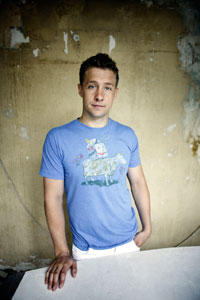
The most interesting things happen on borders. The places where the edges between areas merge - whether they're natural ecosystems, cities or ideas - is where the magic happens. Ideas shift and blend together, and you never know what will happen next. This may be part of the reason that Brooklyn Bridge Park, situated (you guessed it!) right near Brooklyn Bridge between its namesake and Manhattan, is playing host to an appealing new series of art installations for the next year. The brainchild of Danish artist Jeppe Hein, the series is relatively unique among public art projects in that viewers are encouraged to experience the artwork by interacting with it directly. The series is entitled, 'Please Touch the Art', and everyone involved hopes you'll do just that among the 18 different installations that are scattered throughout the park.
As Nicholas Baume, Public Art Fund Director & Chief Curator says, "Jeppe grew up in Denmark where art is very much a part of civic life… this democratic spirit of public art is something he feels naturally connected to." In an official press release, he also discussed the work in more detail. "“Imaginative, whimsical, irreverent, and emotionally resonant, Jeppe Hein turns familiar expectations of works of art on their head. Instead of the respectful distance demanded in museums, Hein’s work invites participation. Titling the exhibition Please Touch the Art, he encourages us to interact with his art in the most direct physical terms. Through that immersive experience, Hein hopes that his work will also touch us."
Whether you happen to be in New York now, or are going to be there in the near future, you're in luck, as the exhibit will be staying in the park until April, 2016. Hopefully, the exhibit will encourage New Yorkers to abandon their traditional (or at least, stereotypical) disconnect from the city around them if it doesn't directly affect them, and bring them the joy and life of a European artistic perspective. While Central Park has played host to grand artistic gestures (think of Cristo's saffron gates project that delighted park-goers several years ago), it's the titular crown of all of New York's parks - it's nice to see things spreading outwards as the city grows and evolves.
To learn more about Jeppe Hein and his past works, take a stop over at his website
http://www.jeppehein.net/. There are also some great images of his past and present projects.
Posted on June 03rd 2015 on 07:19pm
0 Comments
 It seems strange to say, but we almost take it for granted that the artworks of the ancient masters are immutable. Certainly, they are subject to the rigours and stresses of time, but usually this presents itself of the form of craquelure (the name given to the intricate network of cracks and splits that occur in oil paintings, most commonly visible in works of the European old masters), slight fading, or something similar that tends to reinforce the sense of gravity and aura that surround the actual paintings themselves. What we don't expect is for the actual pigments themselves to change, beyond natural aging.
It seems strange to say, but we almost take it for granted that the artworks of the ancient masters are immutable. Certainly, they are subject to the rigours and stresses of time, but usually this presents itself of the form of craquelure (the name given to the intricate network of cracks and splits that occur in oil paintings, most commonly visible in works of the European old masters), slight fading, or something similar that tends to reinforce the sense of gravity and aura that surround the actual paintings themselves. What we don't expect is for the actual pigments themselves to change, beyond natural aging. This week's Artist Spotlight is going to take things in a different direction than usual, as we're not technically going to be looking at the work of a human artist. If you've spent any time at all on Facebook, Instagram, or any other social network in the last few days, you'll have noticed a proliferation of fantastical and bizarre psychedelic images, often tagged with the hashtag #deepdream or something similar. For those of you who haven't seen, check out the example attached to this post to get a sense of the kind of image we're talking about.
This week's Artist Spotlight is going to take things in a different direction than usual, as we're not technically going to be looking at the work of a human artist. If you've spent any time at all on Facebook, Instagram, or any other social network in the last few days, you'll have noticed a proliferation of fantastical and bizarre psychedelic images, often tagged with the hashtag #deepdream or something similar. For those of you who haven't seen, check out the example attached to this post to get a sense of the kind of image we're talking about. One of the staples of art news in the wider media world is record breaking auction prices. It seems nearly impossible to go a week without seeing another news story about a new auction record for a painting, or a work by a living artist, or for a 3 day blockbuster sale where billions of dollars change hands across a few separate auction lots. We've been a bit guilty of this as well, as the numbers truly are staggering, but it has eventually led us to wonder: what does this really have to do with art? It's occasionally interesting, but when new records seem to be cropping up monthly, if not weekly, it's difficult to get as excited about it as before this trend kicked off.
One of the staples of art news in the wider media world is record breaking auction prices. It seems nearly impossible to go a week without seeing another news story about a new auction record for a painting, or a work by a living artist, or for a 3 day blockbuster sale where billions of dollars change hands across a few separate auction lots. We've been a bit guilty of this as well, as the numbers truly are staggering, but it has eventually led us to wonder: what does this really have to do with art? It's occasionally interesting, but when new records seem to be cropping up monthly, if not weekly, it's difficult to get as excited about it as before this trend kicked off. War is a terrible and seeming inescapable part of the world, and we pay uncountable prices for it, both literally and figuratively - but one of the tragically often-ignored prices is in the cultural treasures that are lost along the way. Most notable recently during the invasion of Iraq in 2003 when numerous museums and galleries were looted, and unfortunately still occurring today thanks to the constant fighting in many areas of Iraq and neighbouring countries due to the rise of the Islamic State, some treasures are being stolen and sold on the black market, while some are simply being destroyed. Fortunately for the cultural history of the world, some of these priceless artifacts are being reconstructed using an advanced technology known as photogrammetry.
War is a terrible and seeming inescapable part of the world, and we pay uncountable prices for it, both literally and figuratively - but one of the tragically often-ignored prices is in the cultural treasures that are lost along the way. Most notable recently during the invasion of Iraq in 2003 when numerous museums and galleries were looted, and unfortunately still occurring today thanks to the constant fighting in many areas of Iraq and neighbouring countries due to the rise of the Islamic State, some treasures are being stolen and sold on the black market, while some are simply being destroyed. Fortunately for the cultural history of the world, some of these priceless artifacts are being reconstructed using an advanced technology known as photogrammetry. Richard Prince has been in the news a lot recently after something of an extended absence, and with good reason. As we discussed in a recent post, Prince's latest exhibit consisted of photographs taken directly from other people's Instagram account, enlarging the photos, printing them and then putting them up for sale for a rumoured $90,000 apiece. Naturally, the photographers whose images he used were less than impressed, and at least one has begun to explore the possibility of some kind of formal legal action. Prince is no stranger to this kind of appropriation, and in fact has decades of this kind of practice under his belt - as well as a few legal challenges.
Richard Prince has been in the news a lot recently after something of an extended absence, and with good reason. As we discussed in a recent post, Prince's latest exhibit consisted of photographs taken directly from other people's Instagram account, enlarging the photos, printing them and then putting them up for sale for a rumoured $90,000 apiece. Naturally, the photographers whose images he used were less than impressed, and at least one has begun to explore the possibility of some kind of formal legal action. Prince is no stranger to this kind of appropriation, and in fact has decades of this kind of practice under his belt - as well as a few legal challenges. Art is often mysterious. Anyone who has been spellbound by portraits and still lifes from long ages past or gotten lost in the exploration of a mirror-world of meanings behind conceptual artwork will be familiar with this. The primary difference is that conceptual artwork tends to be the subject of lively modern debate, whereas works by artists long centuries dead are inherently more mysterious, as there are naturally none living today to who were alive at the same time as the artist. It thus falls to the art historian, anthropologists and other experts to make best guesses at the stories behind the development of some of the most famous works of art.
Art is often mysterious. Anyone who has been spellbound by portraits and still lifes from long ages past or gotten lost in the exploration of a mirror-world of meanings behind conceptual artwork will be familiar with this. The primary difference is that conceptual artwork tends to be the subject of lively modern debate, whereas works by artists long centuries dead are inherently more mysterious, as there are naturally none living today to who were alive at the same time as the artist. It thus falls to the art historian, anthropologists and other experts to make best guesses at the stories behind the development of some of the most famous works of art. The Spring rains are over, the flowers are blooming and the summer sun has finally come at last! Summer is one of the most beautiful times of the year and can be one of the most inspiring seasons of all (sorry, Southern Hemisphere! Check out our Winter project inspiration posts instead). After incubating ideas throughout the Winter and cultivating them during Spring, they can finally leap forth during Summer and truly come into their own.
The Spring rains are over, the flowers are blooming and the summer sun has finally come at last! Summer is one of the most beautiful times of the year and can be one of the most inspiring seasons of all (sorry, Southern Hemisphere! Check out our Winter project inspiration posts instead). After incubating ideas throughout the Winter and cultivating them during Spring, they can finally leap forth during Summer and truly come into their own. The art world can be a tricky place to navigate sometimes, especially in the digital era. Thanks to landmark copyright cases about song rights and the legality of remixes, the nature of the legality of other forms of derivative artwork is often called into question - sometimes more legitimately than others. You may have heard the name Richard Prince in the news lately, or perhaps much longer ago. He's made a name for himself by appropriating the artwork of others and reselling it as his own, with the legal-grey-area claim that he has modified it and it's a derivative work of art. He's recently struck again, but this latest bout of appropriation is taking place in the age of the social media outcry, and things may not go as smoothly for Prince as they have in the past.
The art world can be a tricky place to navigate sometimes, especially in the digital era. Thanks to landmark copyright cases about song rights and the legality of remixes, the nature of the legality of other forms of derivative artwork is often called into question - sometimes more legitimately than others. You may have heard the name Richard Prince in the news lately, or perhaps much longer ago. He's made a name for himself by appropriating the artwork of others and reselling it as his own, with the legal-grey-area claim that he has modified it and it's a derivative work of art. He's recently struck again, but this latest bout of appropriation is taking place in the age of the social media outcry, and things may not go as smoothly for Prince as they have in the past.  The most interesting things happen on borders. The places where the edges between areas merge - whether they're natural ecosystems, cities or ideas - is where the magic happens. Ideas shift and blend together, and you never know what will happen next. This may be part of the reason that Brooklyn Bridge Park, situated (you guessed it!) right near Brooklyn Bridge between its namesake and Manhattan, is playing host to an appealing new series of art installations for the next year. The brainchild of Danish artist Jeppe Hein, the series is relatively unique among public art projects in that viewers are encouraged to experience the artwork by interacting with it directly. The series is entitled, 'Please Touch the Art', and everyone involved hopes you'll do just that among the 18 different installations that are scattered throughout the park.
The most interesting things happen on borders. The places where the edges between areas merge - whether they're natural ecosystems, cities or ideas - is where the magic happens. Ideas shift and blend together, and you never know what will happen next. This may be part of the reason that Brooklyn Bridge Park, situated (you guessed it!) right near Brooklyn Bridge between its namesake and Manhattan, is playing host to an appealing new series of art installations for the next year. The brainchild of Danish artist Jeppe Hein, the series is relatively unique among public art projects in that viewers are encouraged to experience the artwork by interacting with it directly. The series is entitled, 'Please Touch the Art', and everyone involved hopes you'll do just that among the 18 different installations that are scattered throughout the park.



